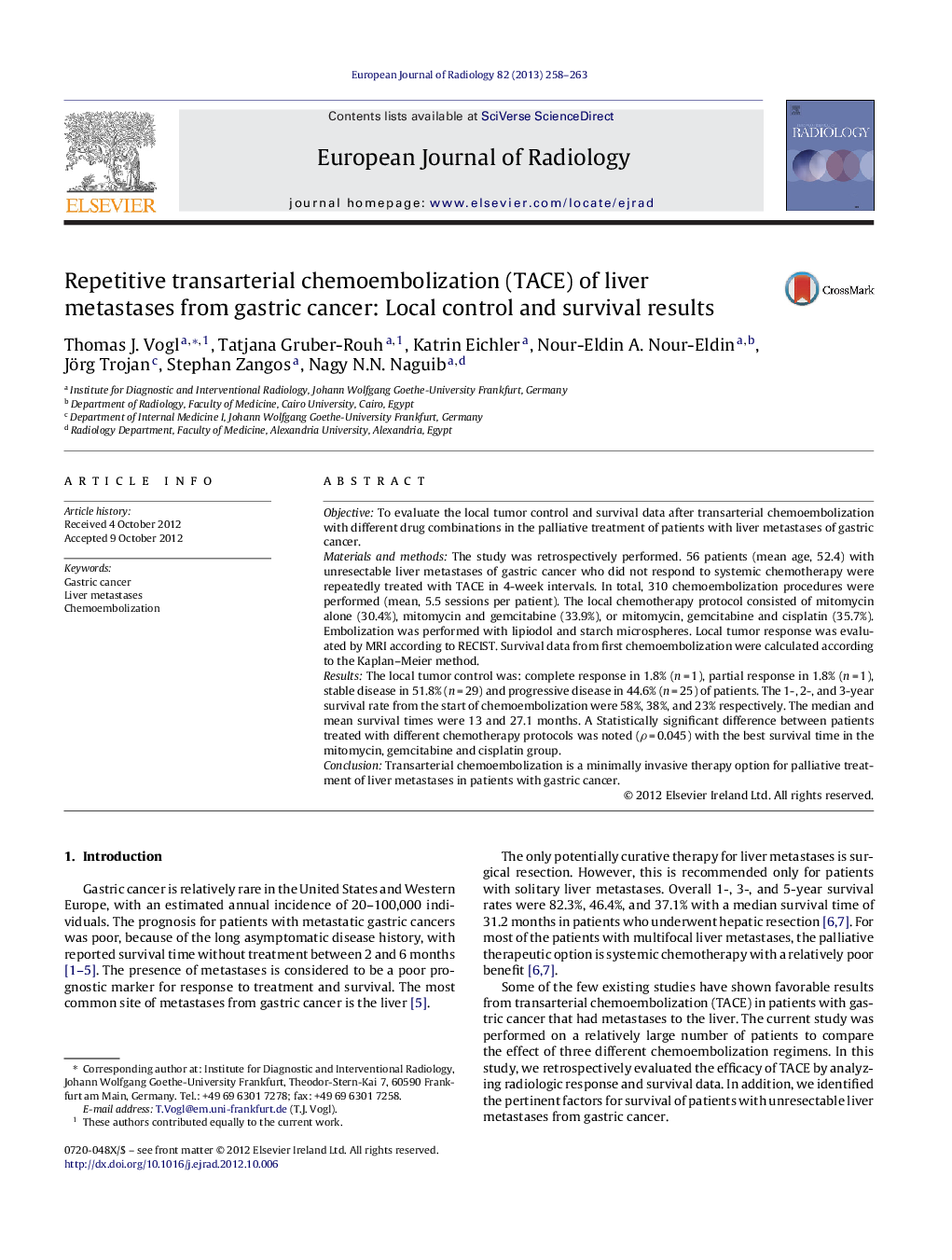| Article ID | Journal | Published Year | Pages | File Type |
|---|---|---|---|---|
| 4225537 | European Journal of Radiology | 2013 | 6 Pages |
ObjectiveTo evaluate the local tumor control and survival data after transarterial chemoembolization with different drug combinations in the palliative treatment of patients with liver metastases of gastric cancer.Materials and methodsThe study was retrospectively performed. 56 patients (mean age, 52.4) with unresectable liver metastases of gastric cancer who did not respond to systemic chemotherapy were repeatedly treated with TACE in 4-week intervals. In total, 310 chemoembolization procedures were performed (mean, 5.5 sessions per patient). The local chemotherapy protocol consisted of mitomycin alone (30.4%), mitomycin and gemcitabine (33.9%), or mitomycin, gemcitabine and cisplatin (35.7%). Embolization was performed with lipiodol and starch microspheres. Local tumor response was evaluated by MRI according to RECIST. Survival data from first chemoembolization were calculated according to the Kaplan–Meier method.ResultsThe local tumor control was: complete response in 1.8% (n = 1), partial response in 1.8% (n = 1), stable disease in 51.8% (n = 29) and progressive disease in 44.6% (n = 25) of patients. The 1-, 2-, and 3-year survival rate from the start of chemoembolization were 58%, 38%, and 23% respectively. The median and mean survival times were 13 and 27.1 months. A Statistically significant difference between patients treated with different chemotherapy protocols was noted (ρ = 0.045) with the best survival time in the mitomycin, gemcitabine and cisplatin group.ConclusionTransarterial chemoembolization is a minimally invasive therapy option for palliative treatment of liver metastases in patients with gastric cancer.
